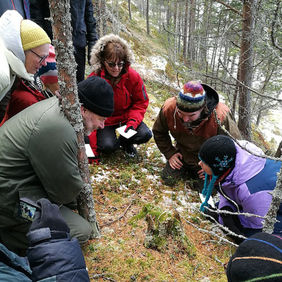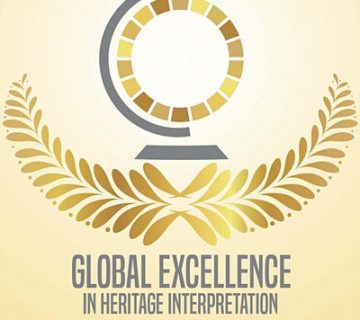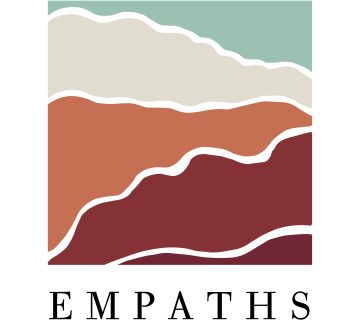During the last year, the field of heritage interpretation got a positive push in Scandinavia. New courses were offered and more members joined Interpret Europe.
In Denmark, nature interpreters have been trained for 30 years. Since the Swedish Center for Nature Interpretation (SCNI) was established ten years ago, a lot of training activities for interpreters have been held in Sweden. Since 2009 there has also been an ongoing cooperation group for nature interpretation with representatives from most of the Nordic countries, and it has published a report about nature interpretation for children and young people and is now working on a Nordic handbook for training in nature interpretation.
During the last year, a number of Interpret Europe courses have been held in Norway leading to more guides getting their Interpret Europe certification. One of them was the first Certified Interpretive Host (CIH) course in Europe. Another one was the first Certified Interpretive Guide course in Scandinavia, with participants both from Sweden and Norway. As a consequence of these courses, membership in Interpret Europe is slowly increasing in Scandinavia.
We are glad to offer quality Interpretation courses and to build this great field in Scandinavia, says Kristian Bjørnstad, country coordinator for Norway and certified trainer for Interpret Europe.
As a result of the courses now being offered, Scandinavian members of Interpret Europe have decided to establish a Scandinavian network to share experiences and to build the field in the years ahead.
Linking tourism and heritage interpretation through the Certified Interpretive Host (CIH) course
The first CIH course in Europe was offered in Norway last year for 11 participants from the border region of Trysil-Sälen. The participants from local tourism companies spent two days learning how to apply interpretation to their experience products. They had a lot of fun doing it.
The CIH course is a new Interpret Europe course especially designed for professionals working in the tourism sector who wish to enrich their experience products with interpretation. The course is run over two days and this assures that participants learn basic interpretation methods that can be applied to their own business. The participants have the opportunity, at least once, to perform an interpretive activity and to receive feedback. During the course, the participants also work on their own products by adding interpretive meaning to them.
‘After taking the course, I have started using Interpretation methods in my guided walks. My gastronomy snowshoe walk has been infused with interpretation with good results’, says Terese Hulterstrom, the owner of the guide company, Explore Sälen, and the first Certified Interpretive Host in Europe.
During the course, the participants work on presentation techniques and verbal communication with customers. Each participant brings their own experience to the course, making it a practice-oriented course. They also discuss their region’s natural and cultural heritage assets.
In the future, the Certified Interpretive Host course will be useful in bringing the tourism and heritage sectors closer together and the field of heritage interpretation will be relevant for tourism guides providing more authentic and experiential experiences.
Guiding in the cold North. The first Certified Interpretive Guide (CIG) course in Scandinavia
Five days of fun in the freezing cold. The first CIG course was arranged by the Norwegian organisation, TVS, together with Interpret Europe and the Swedish Center for Nature Interpretation (SCNI). It was held last year between 6-10 November in Elgå, which is situated in southern Norway close to the Swedish border. The trainers were Thorsten Ludwig, Kristian Bjørnstad and Per Sonnvik.
The ten participants came from both Sweden and Norway. They were all involved in guiding, some of them in national parks and others in private companies. English was used as the main course language, partly because many of the local guides work in English on a daily basis. The participants kept a lively discussion regarding the use of various English terms and how it translates into the Scandinavian languages.
For some of the participants the course got difficult after about three days, but then things became clearer for all of them. In the end, all participants performed excellently in the final guide examination and the theory behind the guiding was also understood. The combination of practice and theory in the IE courses proved to be a good model.
Evaluation from the course shows that the participants thought the course provided some useful tools in order to plan and perform guiding in their activities back home. They appreciated all the practical exercises in the course and the opportunity to get feedback.
This was the first CIG course in Scandinavia. As a result of this course, a network of Interpret Europe members in Scandinavia was created. It now has its own Facebook group and the network will meet up during the year. Future course activity will build more members for Interpret Europe and develop more quality interpretation in Scandinavia in the years ahead.
Kristian Bjørnstad is the IE country coordinator for Norway and an IE certified trainer. He specialises in sustainable rural development and regional parks. He can be contacted at: kristian.bjornstad@interpret-europe.net
Per Sonnvik works for the Swedish Centre for Nature Interpretation. He can be contacted at: per.sonnvik@slu.se
To cite this article:
Bjørnstad, Kristian and Sonnvik, Per (2018) ‘Northern exposure – IE certifying Scandinavians’. In Interpret Europe Newsletter 2-2018, 16-17.
Available online:
www.interpret-europe.net/fileadmin/Documents/publications/Newsletters/ie-newsletter_2018-2_summer.pdf




